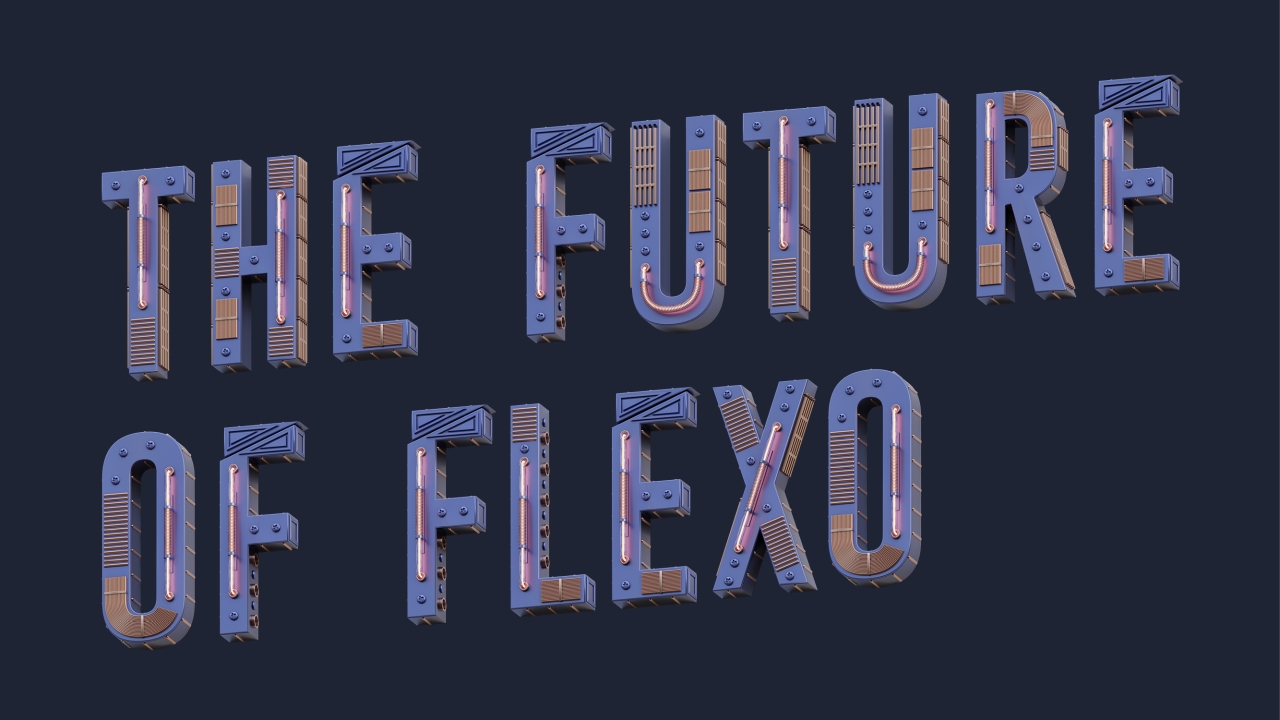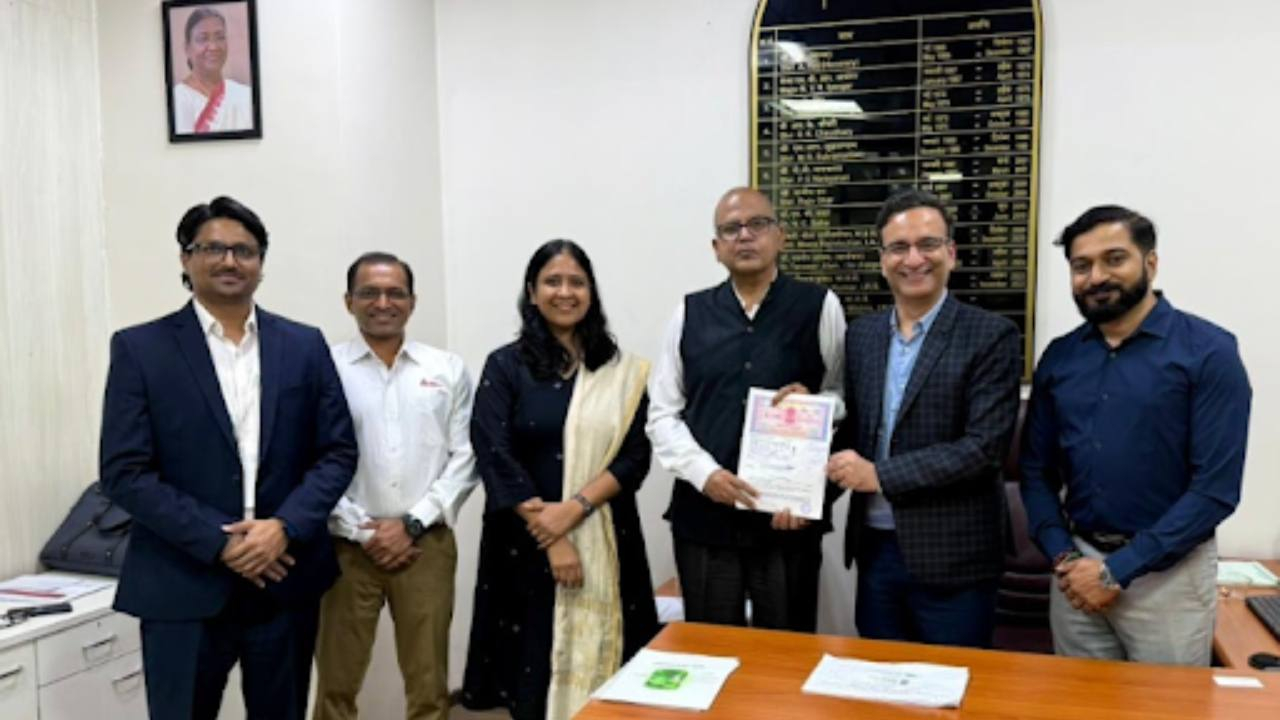The future of flexo
L&L explores what's next for conventional technology

L&L explores what's next for conventional technology
Conventional press manufacturers have marked record sales in recent years as converters looked to add capacity in the wake of the pandemic surge ordering. But at Labelexpo Americas 2022 – the industry’s biggest reunion in four years – flexographic presses were nowhere to be found, while digital press technology stole headlines.
It left many wondering: is flexo dead?
‘Flexo is not dead or dying at all,’ says newly-named Gallus CEO Dario Urbinati. ‘Yes, we are seeing a strong drive toward digital – but we do not see digital as being able to handle 100 percent of jobs or completely replacing conventional print technology. We see them as complementary technologies.’
‘Flexo technology is not standing still,’ Urbinati says.
Industry experts agree: flexography is certainly not going anywhere soon. It’s time-worn and tested technology, and one that in recent years has only gotten faster, more automated and easier to run. In conversations with the leading conventional press manufacturers, L&L learned that, in truth, flexo is far from dead, but rather, conventional print is adjusting to a ‘new normal’ and a changed label converter.
State of the market
Throughout the so-called Covid years, flexo press sales soared, driven by a pandemic-related buying surge in key high-run segments, like food, beverage, household chemical and pharmaceutical markets. The rapid demand for quick-turn labels meant that many brands were shelving ideas for creative marketing and versioning, and flexo converters were kicking out labels as fast as they could print them.
In response to this rapid growth, converters of all stripes were looking to add capacity.
According to a Reports and Insights study, the global narrow web flexo press market is forecast to grow at a CAGR of 6.1 percent through 2030.
‘Mark Andy had our biggest flexo year ever this year, by a pretty considerable margin,’ says Tom Schelmbauer, chief business officer at Mark Andy. ‘Converters were tentative in their buying for a while as they were trying to figure out where digital’s place was. What they found is that a high productivity, high throughput flexo asset is even more important today. Once converters move their short-run work over to digital, they can really make serious money with their flexo machines by optimizing the distribution of jobs to assets that are perfect for what the converter is trying to do.’
While the past few years have been fruitful for flexo OEMs, some industry experts predict that conventional press sales may cool in the coming years as brands and converters re-evaluate their digital strategies post-pandemic.
‘Based on extensive research we have done that included surveying large numbers of converters in the US and Europe over the past several months, we are forecasting that 2023 will be a much more challenging year for conventional/analog press technology and that converters will once again prioritize their digital growth strategies,’ says Jennifer Dochstader of the market research firm LPC. ‘We are predicting that the number of new digital presses sold will once again outpace the number of conventional/analog presses sold and we could see a precipitous drop in conventional/analog press installations in North America and Europe.’
Against the backdrop of all this, conventional press manufacturers are responding to a changed buyer.
Total cost of ownership
Today’s converters are not simply looking at capital equipment based solely on speed and output figures anymore. Data-savvy converters are looking at a machinery’s total cost of ownership as they face an onslaught of market challenges. Turnaround times are getting shorter; materials are harder to come by; prices are increasing; brand owners are keen on process regulation and keeping an eagle eye on costs.
In that environment, a technology’s total cost of ownership becomes even more important as converters chase what Heidelberg vice president of digital print Dan Maurer calls, the ‘tenacious pursuit of cost efficiency.’
Total cost of ownership, or TCO, is a big-picture approach that OEMs and converters are using to calculate the true costs of an asset over its lifetime. It’s a model in which the sticker price is only one part of the equation. Today’s label converter is weighing and tracking the TCP – total cost to print – and factoring in a slew of variables, including costs for servicing and maintenance, downtime, consumables and energy costs, just to name a few.
Gallus’ Urbinati explains: ‘I like the total cost of ownership model because it really reflects 360 degrees of your operation. We have invested extensive work into building a proper TCO calculator to provide a true and fair view of costs associated with running a specific piece of equipment.’
In this view, conventional OEMs see flexo as a clear winner here. Flexo presses, they say, afford converters an ink and substrate flexibility that digital just can’t compete with.
‘I am seeing more sophistication overall,’ says Mark Andy’s Schelmbauer. ‘Not only are machines getting more sophisticated, but so is our customer base and how they evaluate cost. Converters are getting savvier with how they use the machine and how they extract capacity.’
Automation
Speed has been a major factor weighing in flexo’s favor. However, that line is getting blurry. Digital has historically been seen as a way to offload short-run work, while flexo presses kick out the medium- to long-run jobs. As we saw at Labelexpo Americas 2022, digital presses are only getting faster. This means today’s converter must now weigh the options between investing in a highly automated flexo press or new digital presses that can boast operating speeds traditionally attained only by flexo.
At the same time conventional press OEMs are automating every press function that can be automated. The innovations in this respect have been nothing short of incredible. Servo-driven automatic print pressure and register adjustment, quick change die cut, short web path, auto pre-setting and high-definition vision systems are a few of the automation bells and whistles offered by conventional OEMs.
And yet, the more automation features added to an asset, the higher the price tag. Sometimes that can make a highly automated press can be out of reach for small or mid-size converting companies.
Nilpeter recently hired a new chief technology officer with a background in automation and digitization. In an interview with L&L, Carsten Clemensen talked about striking a balance between high-performing automation and reigning in costs.
‘We always have an eye on all our machines – from the entry-level and up – to find the balance between where we can automate and still remain cost competitive,’ Clemensen says. ‘Our machines always fit the needs of the converter while maintaining a cost approach of the customer. We’re always aiming for that balance: entry-level and high-end still based on the same technology.’
Adds Nilpeter’s sales director Jakob Landberg: ‘Our whole idea is to make flexo smarter, make it more automated, digitalize it. Is Industry 4.0 old-fashioned now? That’s the discussion we’re having. How do we turn the printing machine into something that needs as little interference from humans as possible without losing quality and without losing flexibility? There are so many aspects that have not entered into our industry yet.’
Efficiency is not the only goal behind these automation innovations. As a labor shortage squeezes the entire global industry, label converters are looking at automation as a way to optimize production and do more with fewer skilled employees.
Oftentimes, that means developing machines for the new class of flexo press operators working today.
‘We are building the equipment around the talent base that’s coming up in the way that they want to work,’ says Mark Andy’s Schelmbauer. ‘We can’t keep running machines like a 1970s press because the world today is more efficient, and more data driven.’
Omet recently launched its KFlex range of flexo presses. CEO Antonio Bartesaghi believes label converters will continue to choose flexo provided the technology continues to progress towards ‘set and forget,’ where machines can be operated by semi-skilled labor assisted by basic automation and machine intelligence.
Data collection
Label converters today are sophisticated data collectors as they move to a quantitative production environment for a connected digital workflow.
Bobst’s North American business unit director Matt Bennett puts a finer point on it: ‘The trend we’re all talking about now is a connected workflow. The way label converters run the business today, they evaluate what’s going on the press, and what’s going out. They’re measuring everything: material usage, ink, water, energy, set up, downtime – anything that has to do with running the press. They’re collecting that data and evaluating it against every other job.’
With these connected systems, label converters can identify bottlenecks and inefficiencies in their print processes, and then optimize their presses, reduce waste and increase output. Oftentimes this data is accessible in real-time (with historical data) and available from anywhere. Theoretically, a press shop manager can be at a work conference offsite and be able to monitor what’s happening back on the production floor.
‘That information is critical to business owners and press operators,’ Bennett says. ‘Converters, they’re not shooting blind. They accurately collect data in real-time and react in real-time. Shop floors today have to be maximally efficient with as few people as possible.’
Conventional OEMs each have their own version of data collection or connected workflows. Bobst with its Connect Essential, Gallus and Heidleberg with Prinect connection and networking system, Mark Andy with its SmartLink technology, launched at Labelexpo Americas 2022, Nilpeter with its Powerlink platform, and Omet with Service 4.0. Perhaps the first to launch this technology was MPS with its MPSConnect.
Integrating with digital
Throughout all of these interviews, conventional press manufacturers eschewed an ‘us versus them’ mentality when it comes to digital print. In fact, the way most see it, these technologies are complementary and almost all of these suppliers have digital technology in their product portfolios. It’s a clear strategy of these conventional OEMs who see that a label shopfloor has enough room for both technologies.
Rather than see digital print as a competitor, the relationship between the two technologies can create a powerful synergy with the right book of business and the right strategy.
‘The debate goes on when it comes to which technology to invest in,’ Bennett says. ‘But rather than seeing digital and flexo as competitors, at Bobst, we’re asking: how can we create a powerful relationship between the two that will add more value, reduce waste and increase productivity?”
Presses getting wider
Flexo presses are getting wider to cater to the high-growth flexible packaging market.
Label converters have leaned into the flexible packaging market and for good reason. For starters, label converters are already familiar with the key end-use markets that drive much of the growth in that market: the food and beverage, healthcare, household, cosmetics, and pharmaceuticals markets namely. Further, label converters are already supplying labels to the customers, so it makes sense for brands to source all their printed packaging needs from a single source.
But perhaps the biggest driver is what makes digital printing attractive: run lengths. Much like the disruption the label market has witnessed in recent years, SKUs are getting shorter – far too short to make financial sense on the wide web CI flexo and gravure presses on which flexible packaging is commonly printed. A flexo or digital label converter is well-positioned to cater to shorter lead times and smaller runs and widen their portfolio offering.
Typically, what is considered a short-run job in the flexible packaging world might actually be a medium run for a label converter, which is another factor that makes the mid-range flexo press format work. That, in turn, would suggest it makes sense for label converters to consider both mid-web flexo and digital for flexible packaging to cover the full range of what a flex pack buyer might consider a short run.
Emerging brands and start-ups are ripe for opportunities for flexible packaging, as oftentimes they are experimenting with versioning and new packaging formats.
‘Narrower and mid-web conventional and digital printing has effectively opened up the market to a whole range of new customers who have never previously had a solution for short-run flexible packaging orders,’ writes Mike Fairley in the Label Academy book on flexible packaging. ‘Label converters entering the flexible packaging market are particularly finding new business opportunities with the independent and more regional brands, helping these smaller and medium-sized company buyers to simplify how they buy their flexible packaging, and guiding them
in understanding the specifications, tolerances, materials, origination, color technology, inks, and print requirements.’
Conventional OEMs are listening, and as a result, flexo presses are getting wider. Today’s standard press from the likes of Mark Andy and Nilpeter are 17 inches and up. Nilpeter has seen success with its FA-26, and likewise Lombardi with its full-servo Invicta 630; Omet with its X7; Bobst with its M5. MPS’ EF presses go up to 22 inches, with a portfolio that offers wider options.
Labelexpo Europe 2023 will be home to many of these machines, as flexible packaging is expected to take center stage.
Stay up to date
Subscribe to the free Label News newsletter and receive the latest content every week. We'll never share your email address.


